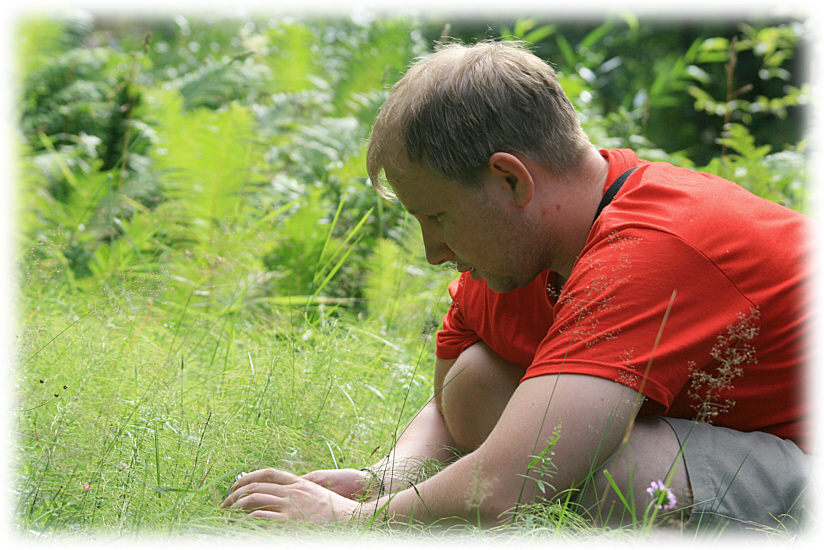Ethnobotany
This is where the wonder plant grows! Luckily, I have my camera! Photo by Martin Kasemaa For basic research traditional botanical knowledge, popular science literature and calendar material at the Estonian Folklore Archives is digitalized and interconnected by similar keywords. The cultural study is focused on the concept of the perceived herbal landscape and its changes in time and space on the basis of extensive data volumes on traditional herbal knowledge. In addition to digitizing, we also focus, as much as possible, on fieldwork, in order to avoid gaps in the modern, constantly changing traditional herbal knowledge. In addition to basic research, the created databases enable us, in cooperation with specialist in other fields, to carry out applied research, in order to make preparations for working out foods and drinks on the basis of herbs, as well as for examining new medicinal herbs or new applications for the known ones. Renata Sõukand's doctoral thesis in semiotics entitled "Estonian traditional herbal knowledge as a source for diachronic interpretation of perceived herbal landscape" analyzes Estonian traditional herbal knowledge from the point of view of the perceived herbal landscape. Considering Estonians’ long-term tradition of herbal use, by the end of the 19th century medicinal herbs had become a part of perceived landscape and everyday life. The changes that occurred during one century were influenced by formal education, extensive spread of popular science literature, estrangement from the land, collectivization, intensive agriculture, urbanization, etc., which had their impact both on the diversity of utilized species and the knowledge of plants in general. Raivo Kalle's master’s thesis in botany and mycology entitled “Foreign plant species in Estonian folk medicine until 1944” focuses on foreign species in Estonian traditional herbal knowledge until the final years of World War II, and deals with the dynamics of changes, the appearance of species in tradition and the influence of literature on the adoption of foreign herbs. We participate in the research group Medica , cooperate with the Estonian Institute of Folklore, Department of Semiotics and Institute of Pharmacy at the University of Tartu, the Institute of Veterinary Medicine and Animal Sciences at the Estonian University of Life Sciences, and the Open Science Network in Ethnobiology. In 2010 we organized the opening seminar of East-European ethnobiological network under the heading Old treasures in the new Europe: the future of ethnobiology in the East and Far East. Projects supporting basic research:Database of Historical Estonian Herbal Folk Medicine (HERBA) and satellite databases, 2009-2013 Estonian Folk Medicine Database of Plant Use (HERBA), 2006-2008 Preliminary study into the identification of new medicinal herbs on the basis of folk tradition, 2007-2008 Grants of the Cultural Endowment of Estonia in 2006, 2007, 2008, 2009: support for programming HERBA, additional entering and improving of texts and processing of data; scanning and digitizing of Gustav Vilbaste’s manuscript collection of plant names. The research is supported by the Medica interdisciplinary conference series. Databases:Database of Historical Estonian Herbal Folk Medicine (HERBA),), compiled by Renata Sõukand and Raivo Kalle, comprises data from older collections, searchable by keywords for diseases and folk plant names.
ELM FD, EFI |